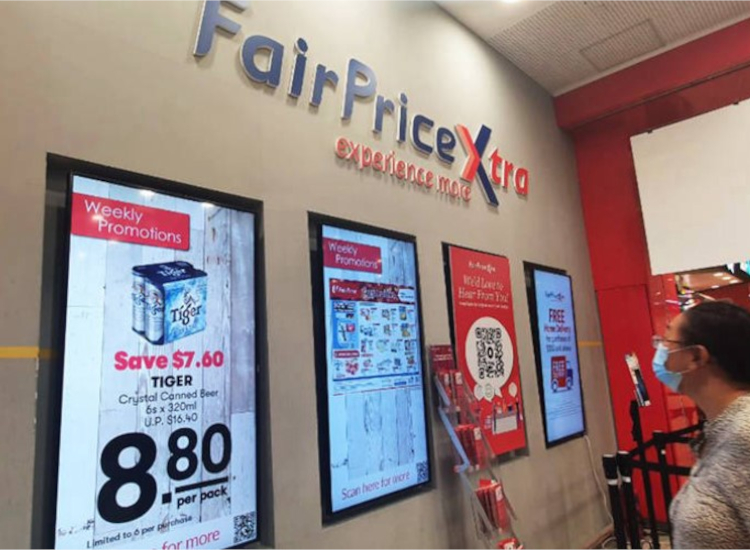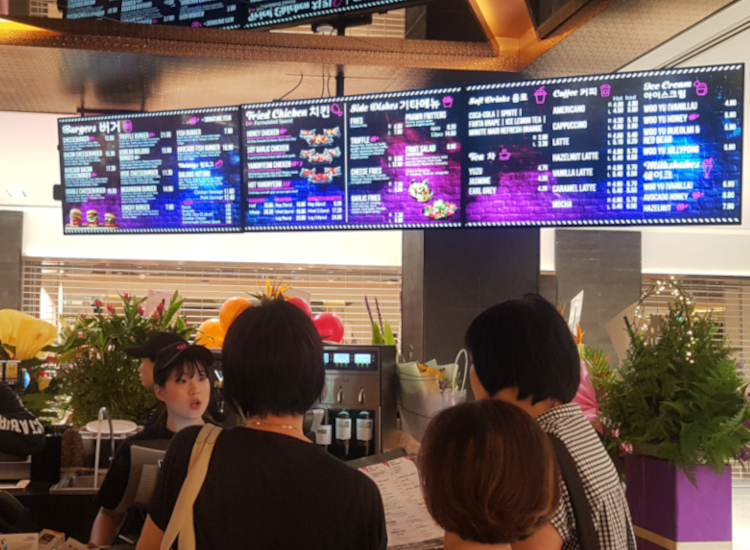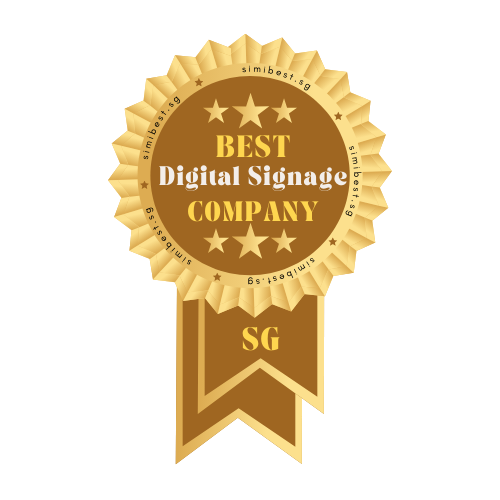
Digital signage is one of the most effective marketing tools that businesses can use to promote their products and services. However, with so many different types of digital signage available in the market, it can be difficult to decide which one is right for your business. If you’re looking for a comprehensive guide to digital signage in Singapore, you’ve come to the right place!
In this blog post, we’ll discuss everything from what digital signage solutions are, to the different types of digital displays available, to how you can use digital signage display solutions to improve your business. We’ll also provide some tips on how to get started with digital signage, and answer some common questions about this growing digital marketing solutions and technology. So whether you’re just starting out or are looking for ways to take your digital signage Singapore strategy to the next level, read on for all the information you need!
Digital signages are electronic displays that show digital content, which can include anything from simple images and videos to more complex animations and interactivity. They’re becoming increasingly popular in businesses as they offer a number of advantages over traditional print signage, including the ability to update content quickly and easily, target specific audiences, and track engagement metrics. There are two main types of digital signage: static and interactive. Static signages display pre-set content that cannot be changed without physically accessing the signage itself, while interactive signages allow viewers to interact with the content using various input methods like touchscreens or motion sensors.

Digital advertising screens are commonly used to advertise and promote products or services in public places. They can be found in a variety of locations such as shopping malls, restaurants, food courts, hotels, and transportation hubs. Digital signage is an effective way to reach out to potential customers as it allows businesses to target a specific audience with laser precision. For example, if you own a food and beverage (F&B) outlet, you can use digital signage to display your menu and promotions to people who are walking by your store. This is especially useful during peak hours when there is high foot traffic. Another good thing about digital signage is that it is highly customizable and flexible. Businesses can choose from a wide range of content formats to create engaging and meaningful content.
Digital signages offer a number of advantages over traditional print signage, including:
1) The ability to update content quickly and easily: With digital signage, you can change your content as often as you like without having to go through the time-consuming and expensive process of printing new signs.
2) Targeted content: Digital signages allow you to target specific audiences with targeted content. For example, if you know that most of your customers are women aged 25-54, you can display content that appeals specifically to this demographic.
3) Engagement metrics: Digital signages give you the ability to track how engaged viewers are with your content. This information can be used to improve future campaigns and make sure that your investment in digital signage is paying off.
4) Increased flexibility: Digital signages offer a lot of flexibility in terms of format, content, and placement. You can use them to display anything from simple text messages to complex animations and videos.
5) Cost-effectiveness: Digital signages are generally more cost effective than traditional print signage, especially when you factor in the cost of printing and installation.
There are two main types of digital displays that you can use for commercial purposes: LCD and LED. Each type has its own advantages and disadvantages, so it’s important to choose the right one for your needs.
LCD stands for “liquid crystal display.” These displays use a backlight to illuminate the pixels, which then shows the image. LCDs are very common in laptops, TVs, and smartphones. One advantage of LCDs is that they use less power than other types of displays. However, they can’t be used in direct sunlight because the backlight will make the image hard to see.
LED stands for “light-emitting diode.” These displays don’t require a backlight because each pixel emits its own light. This makes LED displays more energy-efficient than LCDs. They also have a wider viewing angle and can be used in direct sunlight. However, one downside of LEDs is that they’re more expensive than LCDs.
Generally, LCD displays are typically more affordable than LED displays, but they also have a shorter lifespan. They’re a good choice for businesses on a budget who still want to get high-quality digital signage. LED displays are more expensive than LCDs, but they last longer and use less energy. They’re perfect for businesses that want to make a long-term investment in their digital signage.

Digital signage comes in all shapes and sizes, from small screens placed atop counters to large, freestanding displays. The type of digital signage you choose will depend on your budget, business needs and the amount of space you have available. Here are some of the most popular types of digital signage:
1) LCD/LED screens: LCD and LED screens are the most common type of digital signage. They offer high resolution and can be used indoors or outdoors.
2) Projection screens: Projection screens are a great option if you want a large display without taking up too much space. They can be used indoors or outdoors, but they typically require a power source.
3) Touchscreen displays: Touchscreen displays are becoming increasingly popular, as they offer an interactive experience for users. They can be used indoors or outdoors, but they typically require a power source.
4) Digital billboards: Digital billboards are large displays that are typically placed outdoors. They offer high visibility and can be used to advertise sales or promote events. However, they typically require a power source.
5) Video walls: Video walls are made up of multiple LCD or LED screens that are placed side-by-side. They offer high resolution and can be used to create a dramatic effect. However, they typically require a power source.
There are many different types of content that can be displayed on digital signage, from simple text and images to videos and animation. The most important thing is to choose content that will be attention-grabbing and relevant to your target audience. Whatever type of content you choose, make sure it is regularly updated so that your digital signage always has something new to offer, since stale content is one of the quickest ways to lose viewers’ interest.
Without further ado, here are some ideas for content include:
1) Promotions and discounts: Advertise sales, discounts, and promotions on your digital signage to attract attention and encourage customers to take advantage of your offers. Make sure to update your promotional content regularly so that it remains fresh and relevant. You can also use seasonal content to tie in with holidays or special events. For example, you could display festive holiday decorations during Christmas or promote special deals during Singapore’s Great Singapore Sale.
2) New products or services: Use digital signage to showcase your latest products or services and highlight their features and benefits. This is a great way to generate interest and encourage customers to try out your new offerings.
3) Upcoming events: If you’re hosting an event or sponsoring a local activity, use digital signage to promote it. This is a great way to generate excitement and get people interested in attending. Make sure to include all the relevant details such as date, time, and location so that people can easily find and attend your event.
4) Weather updates: For businesses that are affected by the weather, such as those in the hospitality or transportation industries, it can be helpful to display real-time weather updates on your digital signage. This way, you can keep your customers informed of conditions and help them make decisions about their travel plans.
5) Traffic updates: If your business is located in an area with heavy traffic, you can use digital signage to display real-time traffic updates. This can help your customers plan their routes and avoid getting stuck in traffic.
6) Tips and Advice: Share helpful tips and advice on your digital signage that your target audience will find useful. For example, you could share tips on saving money, staying healthy, or using your products or services.
7) Interesting facts or statistics: Share interesting facts or statistics on your digital signage to engage and educate your audience. For example, you could share information about your company’s history, milestones, or environmental impact.
8) Inspirational quotes: Share inspiring or motivational quotes on your digital signage to encourage and uplift your audience. You can rotate the quotes regularly to keep them fresh.
9) Interactive store directory: If you have a large store or complex, you can use digital signage to display an interactive store directory. This can help your customers find their way around and make it easier for them to locate the products or services they’re looking for.
10) 360 degree tours: If you have a location that is open to the public, such as a museum or tourist attraction, you can use digital signage to display 360 degree tours. This can give your audience a virtual tour of your facility and help them plan their visit.

There are a few things to consider when choosing digital signage for your business. First, you need to decide what type of content you want to display. This will determine the size and resolution of the screen you need. Second, you need to decide where you want to place your screens. Third, you need to determine how you will power your screens. Most digital signage runs on AC power, but there are also battery-powered options available. Fourth, you need to decide what software you will use to create and manage your content. There are many different software options available, so be sure to do some research before making your final decision.
This is a question many businesses ask when they are looking to invest in digital signage for their business. There are different types of content management systems (CMS) that you can use to control the content of your digital signage displays. One key thing to note is that the CMS should offer an easy-to-use interface and a wide range of features including templates, scheduling, and remote management. On top of that, it should offer a wide range of other features including support for multiple displays, social media integration, live data feeds, support for multiple languages, campaign management, reporting, and analytics.
When choosing a CMS platform for your digital signage needs, it is important to consider your specific requirements. Different businesses have different needs and there is no one-size-fits-all solution. It is important to choose a platform that offers the features you need to effectively manage your digital signage content.
There are a few things you need to consider before getting started with digital signage for your business. Here are some tips to get you started. First, figure out what type of content you want to display on your screens. This could be anything from advertisements and promotions to menus and wayfinding information.
Next, decide where you want to place your screens. Will they be inside or outside? Do you want them to be visible from all angles, or just from certain vantage points? Additionally, take into account the size and resolution of the screens. You’ll need to make sure that your content is legible and looks good on the chosen screen size.
Once you’ve decided on installing digital signage for your business, it’s time to start looking for leading digital signage companies in Singapore. There are a few things to keep in mind when choosing a digital signage company. First, make sure that they have experience and can provide digital signage solutions for the type of content you want to display. Second, check reviews and compare various digital signage package pricing from more than one digital signage service provider before making your decision. And third, ask for some samples of the work from the digital advertising screen company before committing to anything. By following these tips, you’ll be well on your way to finding the best digital signage company for your business!
So, what are some installation and maintenance tips for your signages? For starters, make sure that your digital signage is placed in a visible and well-lit area. You want people to be able to see it easily, so they can take in the information you’re trying to communicate.
Another tip is to keep your digital signage updated regularly. If you have a message that you want people to see, make sure it’s fresh and relevant. People will quickly lose interest if they see the same thing over and over again. Finally, don’t forget about maintenance! Just like any other piece of technology, your digital signage will need occasional upkeep. Make sure you have a plan in place for when things go wrong, so you can fix them quickly and efficiently.

When it comes to digital signage, there are a few key things to keep in mind in order to get the most out of your investment. Here are a few tips:
1) Make sure your content is relevant and engaging. We cannot emphasize this enough. Your audience will quickly lose interest if they see the same boring content over and over again. Keep things fresh by mixing up your content on a regular basis.
2) Use high-quality visuals. This is especially important if you’re using video content. Poor-quality visuals will only serve to turn people off from your message.
3) Keep it simple. Don’t try to cram too much information onto your digital signage displays. Stick to one or two key messages that you want to communicate, and make sure those messages are clear and concise.
4) Plan for the future. As technology evolves, so too will the capabilities of digital signage. Keep an eye on the latest trends and developments, so you can upgrade your displays accordingly.
Digital signage is an important tool for businesses in Singapore. By using the right digital signage display Singapore has to offer, businesses can communicate their message more effectively and efficiently. There are many different types of digital signage available, so it is important to choose the right type for your business. If you are not sure which type of digital signage is right for your business, you can consult with a digital signage expert.
We offer a versatile and customizable visual experience, empowering businesses to enhance their brand presence and captivate their audience.

